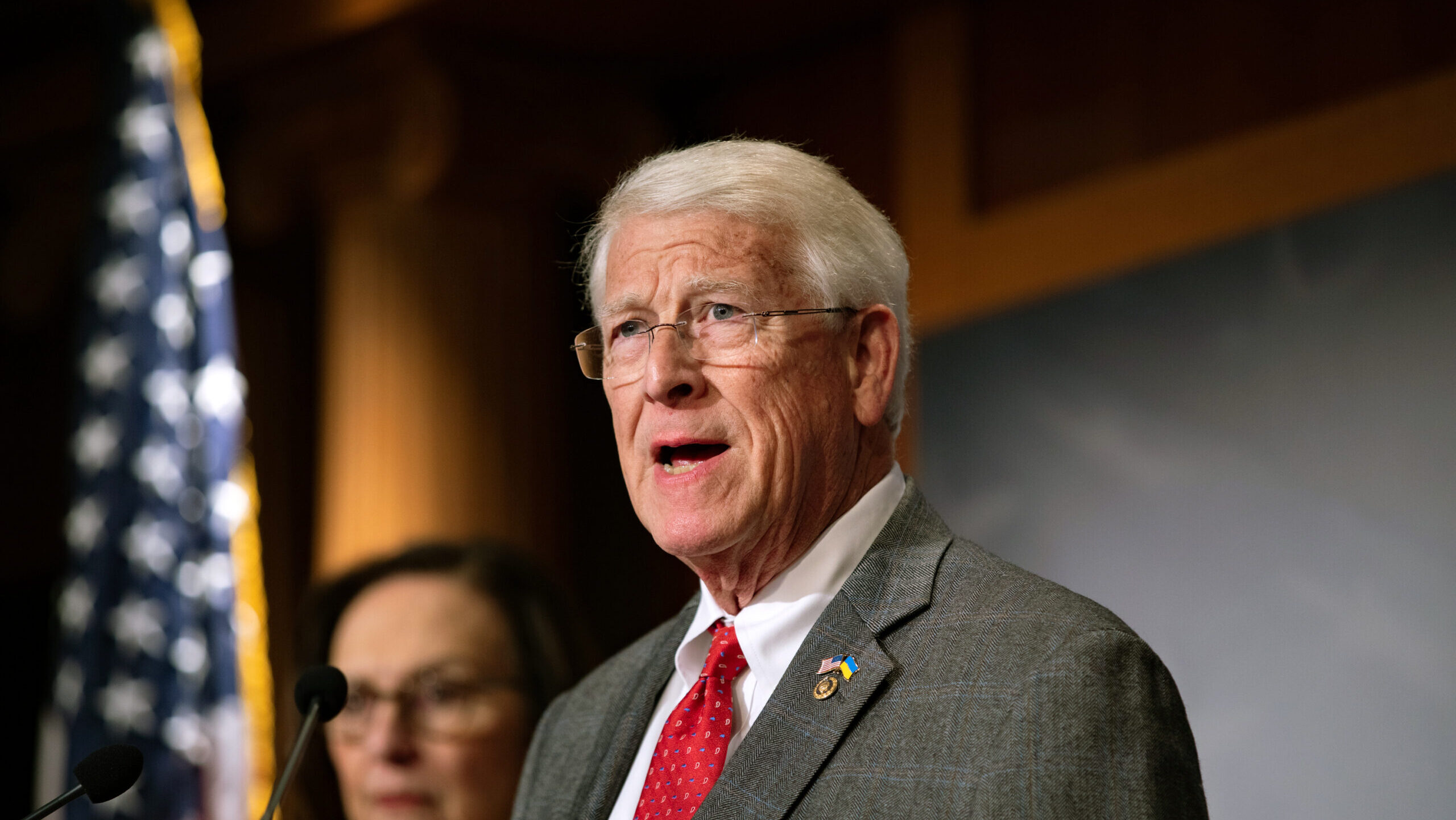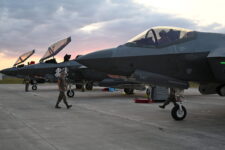
Sen. Roger Wicker (R-MS) speaks to the press on January 11, 2024 in Washington, DC. (Photo by Anna Rose Layden/Getty Images)
WASHINGTON — A key Republican lawmaker today unveiled a proposal to dramatically increase American defense spending to about 5 percent of the national gross domestic product, starting by breaking congressionally mandated budget caps and adding $55 billion to the fiscal 2025 defense budget.
The long-term spending plan from Sen. Roger Wicker, the ranking Republican on the Senate Armed Services Committee (SASC), lays out a “generational investment” in response to a US military that “has a lack of modern equipment, a paucity of training and maintenance funding, and a massive infrastructure backlog,” the plan states.
The United States spent about 3 percent of its GDP on defense in 2023, according to the Congressional Budget Office, and hasn’t sustained defense spending at the 5 percent level since the early 1990s. With the current budget nearing $900 billion, adding another 2 percent would mean an increase of hundreds of billions of dollars.
However, with the nation facing “a window of severe near-term danger and the prospect of a protracted — even decades-long — military competition” with nations such as China, Russia, Iran and North Korea, the plans argues the US “immediately” requires a sharp hike to defense budgets to combat “rapidly growing and metastasizing threats.”
Wicker said the plan, which makes significant investments to increase munitions stockpiles and production of key defense technologies, would “enable the United States to fix our failing defense infrastructure, field a new generation of equipment, and maintain American technological leadership,” thus deterring potential conflict and creating a healthier defense industrial base.
As Wicker is the prime contender to lead SASC should the GOP take the Senate in the upcoming elections this November, his proposal could shed light on his major policy and spending priorities.
Wicker’s plan would raise all munitions production to maximum rates unless stocks are already above the required level, and call for the creation of alternate production lines to surge short-term capacity. It would also reform the Defense Production Act with updated authorities — which are not specified — and execute a $5.2 billion backlog of DPA projects on microelectronics, castings and forgings, and biomanufacturing.
In the area of missile defense, the Defense Department should field the Guam defense system as soon as possible, reverse its decision to cancel the SM-3 Block 1B interceptor, and surge existing production lines for interceptors “while exploring optionality in other systems like NASAMS, FrankenSAM, and others,” a summary of the plan states.
The plan recommends a list of service-specific priorities, calling on the Navy to improve the health of the shipbuilding industrial base so it can deliver a 355-ship fleet — with Wicker’s proposal even laying out a path to get to to 357 ships by 2035. It includes reforms to get submarine builders to three Virginia-class attack subs per year and the creation of a “large scale industrial base program” for surface combatants, which would cost $20 billion over five years. The Navy should also accelerate its buy of unmanned underwater vessels and surface drones, and use multi-year procurement to buy amphibious ships.
Wicker’s plan states that the Air Force should buy at least 340 more fighter aircraft over the next five years and “at least double” B-21 bomber procurement, currently set for 100 planes. It also directs the Air Force to begin a rapid acquisition program for the E-2D Hawkeye instead of buying the E-7 Wedgetail.
The Army should “adopt lessons war in Ukraine,” and field new air defense and counter-UAS units, the plan says. It should also accelerate the development of long-range munitions and command-and-control technologies for operations in the Western Pacific.
Meanwhile, the Marine Corps needs to make “major” investments in technologies to enable sophisticated contested logistics and accelerate its Force Design 2030 plans.
The plan calls for greater prioritization of “posture-related initiatives” in the Western Pacific and states that Indo Pacific Command should modernize its command and control technologies and improve interoperability with key allies in the region—including the potential re-deployment of tactical nuclear weapons in the Korean Peninsula.
In Europe, the plans says the US military should permanently base an Armored Brigade Combat Team in Poland and increase rotational deployments of forces in Eastern Europe.
A Budget Heading For Debate
Another key provision of the plan is more immediate. Wicker’s suggestion that this year’s defense budget grow by $55 billion comes just weeks before the Senate Armed Services Committee is set to debate the fiscal 2025 National Defense Authorization Act, starting on June 11.
It is unclear whether Wicker’s gambit to crack budget spending caps this year will be successful, as SASC chairman Jack Reed, a Rhode Island Democrat, has yet to state whether he will back a larger defense budget. The Republican-led House Armed Services Committee, which marked up its version of the bill last week, opted to keep spending within agreed-upon limits.
However, key leaders on the Senate appropriations committee have signaled interest in raising FY25 defense spending, potentially opening the door to crack the budget caps approved during last year’s debt ceiling agreements.
Speaking to the AP, Wicker acknowledged that getting lawmakers to agree to break spending caps would be “a hill to climb,” but added, “We would be very foolish on a national survival basis to adhere to that when it comes to national defense.”






















